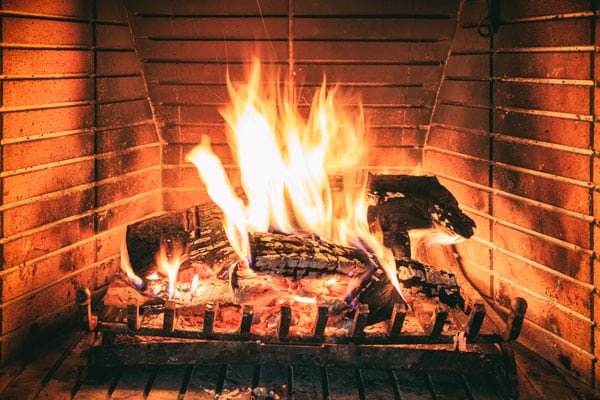Carbon Monoxide Poisoning: A Risk That Increases in Winter Months

Protect yourself and your family by learning the symptoms of carbon monoxide poisoning and how to prevent it.
What is the “threat” of carbon monoxide poisoning?
As the temperatures turn frigid, we close our windows and set our home thermostats higher. These everyday efforts to warm our homes during winter weather can increase our risk of poisoning from carbon monoxide (CO).
Every year, exposure to CO will send more than 100,000 people to hospital emergency departments throughout the U.S., and more than 14,000 of those will require hospitalization. Sadly, more than 400 people die in the U.S. annually from accidental CO poisoning.
How is carbon monoxide produced?
Carbon monoxide is a gas contained in the fumes produced by fuel-burning (non-electric) machines and appliances. These fuel-burning appliances include non-electric furnaces, kerosene heaters, gas-powered motors, fuel-powered lanterns, gas stoves, portable generators, or simply burning charcoal or wood.
These appliances and activities typically enrich our lives and cause few problems in an open or properly vented area. However, carbon monoxide gas can accumulate to a level that is deadly for humans and animals in an area that is not properly ventilated.
The problem with carbon monoxide is that you can’t smell, taste, or see it. As such, you do not realize when you are inhaling it.
Everyone is susceptible to CO poisoning. However, infants, children, senior citizens, and those with respiratory problems are especially susceptible to this potentially deadly gas.
What are the symptoms of CO poisoning?
Low-level CO poisoning symptoms include headaches, dizziness, confusion, and drowsiness. High levels of carbon monoxide can cause breathing and vision impairments, reduced brain function, loss of consciousness, and death.
How can you protect yourself and your family from CO poisoning?
Carbon monoxide can be deadly. Therefore, it is essential that you take precautions to lower your risk of exposure.
Simple steps you can take to protect yourself and your family from CO exposure include:
- Install CO detectors in your home and anywhere you use fuel-burning appliances. Make sure your CO detectors are located on each level of your home and outside separate sleeping areas.
- Test CO detectors periodically to make sure they are working correctly. Change the batteries in your CO detector every six months.
- Have your heating system, water heater, and any other gas, oil, or coal-burning appliances serviced by a qualified technician every year.
- Ensure your home is adequately ventilated. Install and use exhaust fans over gas appliances. Check and clean vents and flues regularly. Blocked ventilation lines can cause CO to build up in your house.
- Never leave your vehicle or any fuel-burning engine running in an enclosed or partially enclosed space, such as a garage.
- Avoid operating a motor vehicle, generator, pressure washer, or gasoline-powered engine less than 20 feet from an open window, door, or vent. Fumes from the engine can vent into an enclosed area.
- Never use a propane gas/wood/charcoal grill, hibachi, fuel-powered lantern, or portable camping stove inside a home, tent, camper, or garage, even if the windows are open.
- Have a backup plan for providing heat in your home. Gas stoves and ovens are not safe alternative heat sources.
- If you use a gasoline or other fuel-burning generator during a power outage, keep the generator outdoors, 20 feet from your house, during use. If the generator is indoors, your house could quickly fill up with deadly carbon monoxide gas as the fuel burns.
- Only use fuel-burning appliances or motors in areas with adequate ventilation and a fresh air source.
What are you supposed to do if the CO alarm goes off?
If your carbon monoxide alarm sounds, make sure everyone quickly exits your house or apartment. Once you are safely outside in an area with fresh air, call 911 or your local emergency number. Only re-enter your home after the problem is resolved by a trained professional.
If you have potentially been exposed to carbon monoxide gas, see a doctor immediately, even if you don't feel symptoms, because CO can remain in the blood.
If you detect gas that has an odor inside your home, leave the house immediately and call local gas authorities from outside. Do not use or adjust any electronics, including lights or phones, before exiting your house.
Remember, CO poisoning is entirely preventable. You can protect yourself and your family by understanding how CO is produced, following simple safety precautions to avoid exposure, and knowing what to do if you or someone you know may have been exposed.

